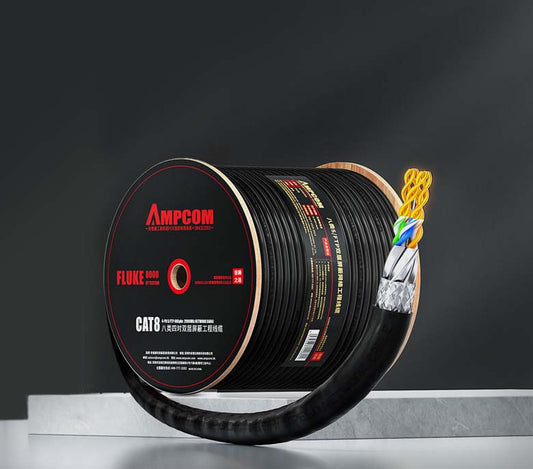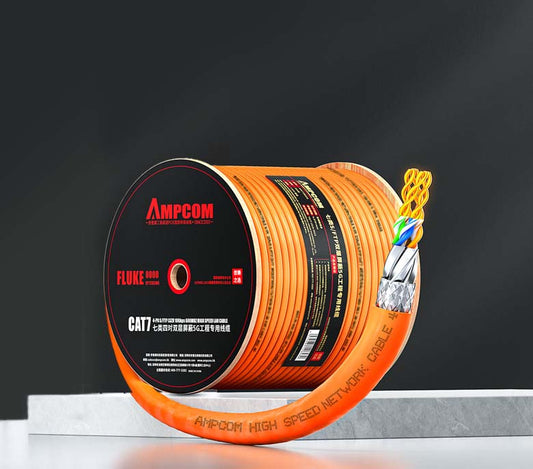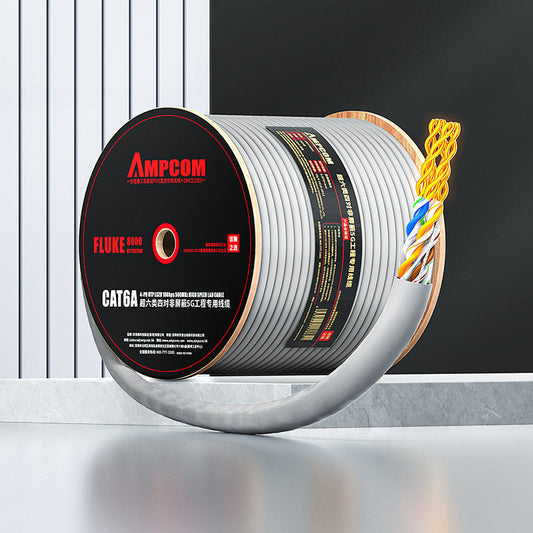MPTL (Modular Plug Terminated Link) for Cameras & APs: When and How
Introduction
In the world of network cabling, the installation of Power over Ethernet (PoE) devices, like cameras and Access Points (APs), is a common yet crucial task. Among the various installation methods, Modular Plug Terminated Link (MPTL) has gained popularity. MPTL offers a simple, flexible, and cost-effective solution to connect PoE devices, significantly reducing both labor and material costs compared to traditional network setups.
In this article, we'll delve into MPTL for PoE cameras and APs, exploring the advantages, how to implement it, and why it should be part of your network infrastructure strategy.
What is MPTL (Modular Plug Terminated Link)?
MPTL is a cabling technique used in Ethernet networks where the connector (often an RJ45 plug) is attached directly to the Ethernet cable. Unlike traditional network setups that use wall-mounted jacks or patch panels, MPTL involves field-terminated connectors that are placed directly on the Ethernet cable.
This technique is especially useful in PoE installations for cameras and APs, allowing both power and data to be transmitted over a single cable, thus eliminating the need for separate power lines.
Why Use MPTL for PoE Cameras & APs?
- Cost-Effectiveness: MPTL significantly reduces the installation cost by eliminating the need for additional outlets, patch panels, and structured cabling setups. This is particularly useful in large-scale PoE camera systems where numerous devices need to be connected across a building or campus.
- Flexibility: MPTL allows for easy reconfiguration of network setups. If devices like PoE cameras or APs need to be moved or relocated, MPTL cables can be easily re-terminated, saving both time and money.
- PoE Efficiency: When installing PoE cameras and APs, MPTL ensures that both power and data are delivered through a single cable, eliminating the need for separate power lines. This results in faster and cleaner installations and improved network efficiency.
When to Use MPTL for PoE Cameras & APs
MPTL is especially beneficial in the following scenarios:
- High-Density Installations: When there are large numbers of PoE cameras or APs to install, MPTL is a great way to streamline the setup process and reduce clutter.
- Flexible Reconfigurations: In dynamic environments, such as offices or surveillance areas, where network reconfigurations are frequent, MPTL simplifies the process. Devices can be moved without the need for additional rewiring or installation.
- Cost-Conscious Projects: For businesses looking to reduce costs in their PoE network installations, MPTL offers a low-cost alternative to traditional methods that involve extensive infrastructure.
- Surveillance Systems: MPTL is highly suited for PoE camera systems, where a flexible, cost-effective installation method is required.
How to Implement MPTL for PoE Cameras & APs
- Choose the Right Cable: The choice of Ethernet cable (typically Cat5e, Cat6, or higher) depends on the power requirements of your PoE devices and the distance between the switch and the device. For best results, use high-quality Ethernet cables that support both PoE and high-speed data transmission.
- Field Termination of Connectors: MPTL relies on field-terminated connectors, typically RJ45 modular plugs, attached to both ends of the Ethernet cable. This means that during installation, connectors are directly crimped onto the cables, eliminating the need for wall jacks or patch panels.
- Cable Installation: Once the connectors are terminated, route the cable directly from the PoE switch to the PoE camera or AP. Ensure that the cables are correctly managed and organized to avoid signal degradation due to excessive bends or stress.
Benefits of MPTL for PoE Installations
- Reduced Installation Time: Since there’s no need for wall outlets, patch panels, or extensive wiring, MPTL installations are faster and less labor-intensive.
- High-Performance PoE Delivery: By using MPTL for PoE camera systems and APs, you ensure that both power and data are transmitted efficiently over the same cable, optimizing performance and reducing power loss.
- Scalable and Flexible Network Design: MPTL’s field-termination setup makes it easy to scale up or reconfigure your network. Whether you're adding additional cameras or adjusting network connections, MPTL offers the flexibility needed for future-proofing your installation.
MPTL vs. Traditional Cabling Methods
- Field-Termination vs. Pre-Terminated: In traditional installations, pre-terminated cables require additional wall outlets or panels. MPTL uses field-terminated connectors, simplifying the setup and reducing the cost of installation.
- Installation Cost: MPTL is more affordable than traditional cabling methods because it doesn’t require costly outlets or hardware. It’s perfect for businesses and installations that are cost-conscious.
- Time and Labor Efficiency: With MPTL, cables are directly terminated at the device's end, speeding up the installation process significantly compared to traditional methods that involve multiple hardware components.
Conclusion
For businesses looking to deploy a PoE camera system or enhance their network infrastructure, MPTL is a game-changing solution. Offering cost savings, flexibility, and high performance, it is ideal for fast-growing networks where reconfiguration is often required.
Whether you’re upgrading your network or starting from scratch, MPTL for PoE cameras and APs ensures a streamlined and reliable installation. Learn more about PoE voltage drop, Wire Gauge, and Shielded vs Unshielded Cables for your network needs.
FAQ
- What is MPTL and why is it used in PoE installations?
- MPTL stands for Modular Plug Terminated Link, a cabling method where connectors are attached directly to the Ethernet cable. It’s used in PoE installations to deliver both power and data over a single cable, offering cost savings, flexibility, and improved network performance.
- Can MPTL be used for both data and power?
- Yes, MPTL is ideal for PoE devices such as cameras and APs, as it allows both data and power to be transmitted through the same Ethernet cable.
- What types of cables are best suited for MPTL installations?
- Cat5e, Cat6, and Cat6a cables are commonly used for MPTL installations. The choice depends on your PoE power requirements and the distance between the PoE switch and the devices.
- When should I choose MPTL over traditional Ethernet cabling methods?
- MPTL is best for cost-conscious, flexible, and high-density installations where PoE devices like cameras and APs are used. It’s a more efficient solution compared to traditional methods, especially in environments with frequent reconfigurations.



